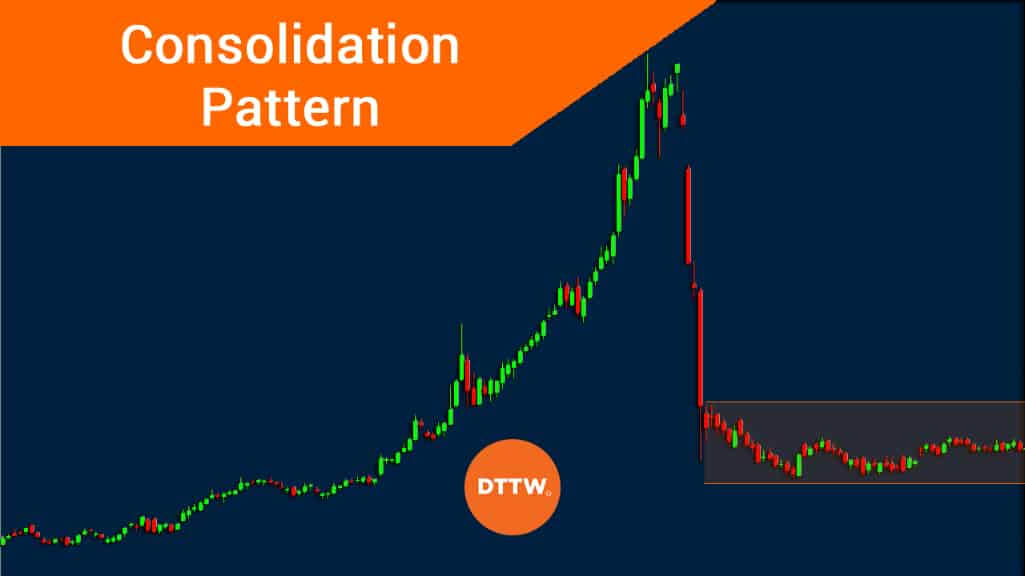
What Consolidation in Stocks Is – Get All The Information
Have you been involved in the stock market for some time, either as an investor or trader and are you interested in finding out what consolidation in stocks is? Are you engaged in stock trading at a certain level but want to improve your knowledge and make big profits?
First of all, it’s crucial to understand that the stock market, in all of its essence, represents the accumulation of buyers and sellers of stocks. In other words, stocks are called “shares” as well, while the stock market is also referred to as “Share or e equity market.”
Shares refer to ownership claims on businesses that could involve securities and privately traded stocks. Ambitious stock investors must remember that while dealing with stocks, it’s crucial to have a certain investment strategy in the plan.
However, one of the most commonly asked questions regarding the stock market is, “What consolidation in stocks generally is?” Why is it so crucial to know about it lately? Let’s get all the information!
Learn what consolidation represents.
Consolidation represents a phase once stock traders trade a stock or an index within a range. According to reports, the trend is moving sideways, and its direction could be subject to change based on the situation.
If the current range is breached, it could result in significant movements, but as long as the range remains intact, forecasting the direction of the movement remains uncertain.
Volumes, Relative Strength Index (RSI), and Moving Average Convergence Divergence (MACD) represent technical instruments that all help confirm a strong breakout.
Consolidation is caused because of the uncertainty of a trader. The consolidation pattern is able to be broken because of the following reasons:
- Dissemination of significant news
- The activation of a series of limit orders can cause an impact.
Consolidation in Technical Analysis

In technical analysis, consolidation is an asset swing back and forth between an explicit pattern of trading levels. Generally, consolidation is observed as “market indecisiveness” that terminates once the price of an asset goes either beyond or beneath the trading pattern.
Regarding financial accounting, consolidation represents a set of statements consolidating a parent and subsidiary company as one entity.
Periods of consolidation and Support and Resistance Levels
Ambitious traders can find consolidation in stocks, i.e., in price charts for whatever time interval. These periods could be from days to even months. Technical traders are searching for certain support and resistance levels in price charts. Once they find these levels, they utilize them to buy and sell resolutions.
A consolidation pattern is prone to be broken due to the following reasons:
- The publication of crucial news
- The initiation of a chain of limit orders can have an effect.
Support and Resistance levels
Those interested in consolidation in stocks should first understand that the lower and upper bounds of the price of an asset develop the support and resistance levels inside the consolidation pattern.
For absolute newbies, it’s important to know that the resistance level refers to the top end of the price pattern, while on the other hand, the support level refers to the lower end. After breaching the established support or resistance levels, the market’s volatility rapidly intensifies, presenting a window of opportunity for short-term traders to earn a profit.
Technical traders interpret a breakout above the resistance as a sign of the price’s potential to climb further, prompting them to buy. Conversely, a breakout below the support level implies that the price may continue to decline, leading the trader to sell.
What are the crucial aspects of consolidation?

Any time you see consolidation in stocks, i.e., once a stock shows a consolidation pattern, one must anticipate the breakout. The support and resistance levels would specify probable reversal points in that situation.
A stable rise in the stock’s price after a breakout is expected if it holds the levels with decent volumes. Corrections may still occur, but they show firm upside buying momentum. In contrast, a breakout accompanied by huge volumes and high volatility may result in an uncertain price movement, indicating unstable sentiment.
What is the price target for the breakout?
Traders in the volatile stock market set a price target for a breakout equal to the range’s high and low levels. The price could rise further, even to double the range. The time to reach the target depends on the consolidation.
Longer consolidation means a shorter time to hit the target.
Stop loss is at support and resistance levels near recent lows and highs. After a confirmed breakout, the stop loss can be moved to the range’s average.
How to effectively identify consolidation in stocks?
If you’re determined to identify consolidation in stocks or generally effectively, it’s essential to do so by observing 3 concurrently happening properties on a specific price chart. Here are these three properties you need to follow:
- The stock has perceptible and solid support and resistance levels, mostly like a flag continuation pattern.
- A lean trading range. Nonetheless, please pay attention to it since not every security or stock has identical volatility. Generally speaking, trading ranges are comparative.
- No significant spikes are observed for its comparatively low level of the trading volume.
Neutral in nature
Consolidation is neutral, neither positive nor negative by itself. In some cases, a consolidation phase follows a healthy price movement. Traders may view this as an opportunity to eliminate overbought or oversold positions, resulting in smoother price movements before the next trend emerges.
What are consolidation breakouts exactly?

When you’ve successfully identified consolidation in stocks, it is crucial to observe any probable breakouts beneath or below the bounds of the trading range, both upper and lower. Remember that all these breakouts are usually followed by huge growth in volume.
They’re also pointing to huge gains or losses in the shortest time. It’s especially the case once stocks have been consolidated for longer periods.
What does a breakout from a consolidation pattern show?
When a consolidation pattern is broken, it indicates that either buyers or sellers have triumphed over the other. Trading strategies for breakouts typically involve buying long and covering short positions when prices breach the resistance level or selling short and covering long positions when prices fall below support.
Some traders adopt a more cautious approach and seek confirmation through analytical tools or sustained price action before entering these trades.
Consolidation in Financial Accounting – what to Note?
In financial accounting, consolidated financial statements combine a parent and subsidiary company into a single entity. The parent company may own most of the subsidiary, with a non-controlling interest (NCI) owning the rest, or the parent company may own the entire subsidiary.
The subsidiary’s assets and liabilities are set to fair market value to prepare consolidated financial statements, which are then used in the combined financial statements. Suppose the parent and NCI pay more than the net assets’ fair market value (assets minus liabilities). In that case, any excess amount is recorded in a goodwill asset account, expending the goodwill over time.
Consolidation eliminates transactions between the parent and subsidiary and between the subsidiary and the NCI. The consolidated financials only show transactions with third parties, and each company continues to prepare separate financial statements.
A brief example of consolidation in financial accounting
In this accounting consolidation example, XYZ Corporation purchases The total amount of the net assets of ABC Manufacturing for $1 million. ABC’s net assets’ entire fair market value refers to $700,000.
When the accounting firm creates consolidated financial statements, they list ABC’s net assets at $700,000. A goodwill asset account records the $300,000 paid above the fair market value.
What are the top consolidation strategies?

After a bearish breakout, it’s common for a support level to transform into a new resistance point, and similarly, after a bullish breakout, a resistance level can become a supporter. Consolidations can sometimes exhibit triangular or pennant patterns, providing opportunities for implementing continuation strategies.
Before devising a trading plan for a consolidation pattern, it’s crucial to determine how long the pattern has persisted. The duration of a consolidation pattern can vary considerably, with intraday consolidations lasting for a few minutes or hours.
Technical analysis software can provide real-time updates on market conditions for active intraday trading. In contrast, some consolidation patterns can endure for several days, weeks, months, or years. Such patterns can be vulnerable to false breakouts, so validating price movements before capitalizing on a trend is essential.
While countertrade and contrarians can still trade on stocks with narrow consolidations, the profit potential is often limited due to the narrow range.
Bottom Line
When a stock or security is not exhibiting a sustained uptrend or downtrend, it’s referred to as being in a consolidation phase. During such periods, the stock trades within narrow price ranges, limiting the number of trading opportunities until a new pattern materializes.
Consolidated stocks are known for their relatively low volatility, which makes them less attractive to traders seeking rapid price movements. As a result, traders often look for emerging trends or patterns that signal a breakout from the consolidation range. Until then, there are typically fewer trading opportunities available in consolidated stocks.
Despite limited trading opportunities, consolidation can offer valuable insights into the overall market sentiment towards a particular stock or security. By closely monitoring consolidation patterns, traders can identify potential support and resistance levels and better anticipate future price movements.
FAQ

What is a consolidation?
Consolidation represents a phase once stock traders trade a stock or an index within a range. According to reports, the trend is moving sideways, and its direction could be subject to change based on the situation.
If the current range is breached, it could result in significant movements, but as long as the range remains intact, forecasting the direction of the movement remains uncertain.
Volumes, Relative Strength Index (RSI), and Moving Average Convergence Divergence (MACD) represent technical instruments that all help confirm a strong breakout.
Consolidation is caused because of the uncertainty of a trader. The consolidation pattern is able to be broken because of the following reasons:
- Dissemination of significant news
- The activation of a series of limit orders can cause an impact.
What is Consolidation in Technical Analysis
In technical analysis, consolidation is an asset swing back and forth between an explicit pattern of trading levels. Generally, consolidation is observed as “market indecisiveness” that terminates once the price of an asset goes either beyond or beneath the trading pattern.
Regarding financial accounting, consolidation represents a set of statements consolidating a parent and subsidiary company as one entity.
What are the crucial aspects of consolidation?
Any time you see consolidation in stocks, i.e., once a stock shows a consolidation pattern, one must anticipate the breakout. The support and resistance levels would specify probable reversal points in that situation.
A stable rise in the stock’s price after a breakout is expected if it holds the levels with decent volumes. Corrections may still occur, but they show firm upside buying momentum. In contrast, a breakout accompanied by huge volumes and high volatility may result in an uncertain price movement, indicating unstable sentiment.
What are the top consolidation strategies?
After a bearish breakout, it’s common for a support level to transform into a new resistance point, and similarly, after a bullish breakout, a resistance level can become a supporter. Consolidations can sometimes exhibit triangular or pennant patterns, providing opportunities for implementing continuation strategies.
Before devising a trading plan for a consolidation pattern, it’s crucial to determine how long the pattern has persisted. The duration of a consolidation pattern can vary considerably, with intraday consolidations lasting for a few minutes or hours.




